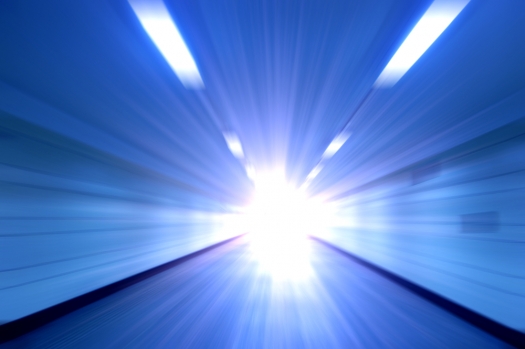Georgia Tech team demonstrates deep UV lasers on sapphire

Lasers have comparable or lower lasing thresholds than those on higher cost AlN substrates
III-nitride deep-ultraviolet (DUV) lasers are expected to have numerous applications such as high-density optical storage, non-line-of-sight (NLOS) communication and biochemical identification. However, the state-of-the-art III-nitride DUV lasers have been grown on free-standing AlN substrates that are lower in dislocation density but significantly higher in cost and smaller in size, as compared to sapphire substrates.
Recent work on AlGaN multiple quantum well (MQW) laser grown on sapphire carried by a collaborative team led by Xiao-Hang Li and Russell D. Dupuis at Georgia Institute of Technology, has shown that it is possible to grow deep UV lasers with comparable or lower lasing thresholds on the sapphire substrates versus those on the AlN substrates.
The study, published in Applied Physics Letters, is claimed to be the first demonstration of deep UV lasers grown on the sapphire with lasing wavelength shorter than 250 nm. The lasers in this study also exhibits lower or comparable lasing thresholds compared to the state-of-the-art lasers grown on the AlN substrates at similar wavelengths. The results indicate that it is possible to grow with high quality AlN/sapphire templates; optimised AlGaN MQW growth condition, effectively creating an active region with high internal quantum efficiency leading to low threshold stimulated emission.
The laser structure was grown on 2-inch diameter c-plane sapphire substrates in a 3x2-inch low-pressure MOCVD reactor with a close-coupled showerhead configuration. The structure first comprises a 3.5µm AlN template layer deposited on the sapphire substrate, followed by an AlGaN graded layer and five periods of AlGaN MQWs grown pseudomorphically on the template layer.
Subsequent to the growth, the wafer was cleaved into Fabry-Perot laser bars assisted by laser or hand scribing from the back side of the sapphire substrates. The laser bars were later characterised by a 193-nm excimer laser for optical pumping at room temperature. Stimulated emission was observed at wavelengths of 256 nm and 249 nm with thresholds of 61 kW/cm2 and 95 kW/cm2 at room temperature, respectively.
An important question arising from this work, is whether one can overcome the challenges of high quality p-doping in high-Al AlGaN materials. To date, the shortest wavelength of electrically-driven III-nitride laser is 336 nm. Based on this study, further investigation is necessary to realise electrically-driven III-nitride lasers operating in the deep UV spectral range.
This is a very brief summary of the paper, 'Low-threshold stimulated emission at 249nm and 256nm from AlGaN-based multiple-quantum-well lasers grown on sapphire substrates', from Applied Physics Letters 105, 141106 (2014).































